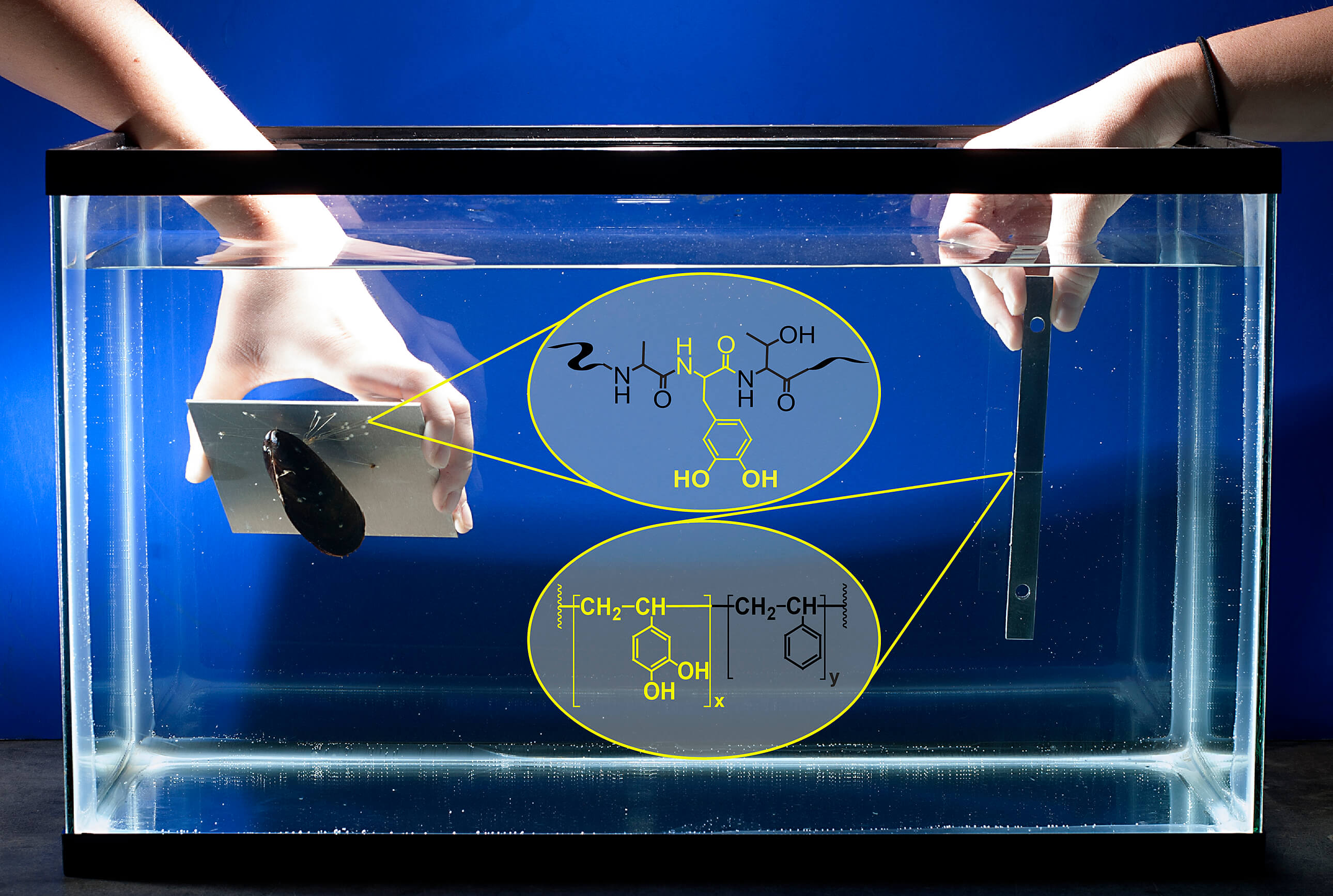Adhesives are known not to work well with water. These glues are mostly synthetic, created by manufacturers from a variety of chemicals and raw materials.
When such glues are soaked, they have the tendency to collapse over time. A classic example of this is band-aid wearing off while taking a shower.
But what if we make our glues inspired from nature? Perhaps this could make adhesives stick even when wet. This approach, which is biomimetic, has been looked into several times before to develop materials for wet adhesion. But an assistant professor of biomedical engineering at Michigan Technological University has a rather different take.
Dr. Bruce Lee, whose work is supported by the Office of Naval Research (ONR), has explored the use of a certain protein produced by mussels to make a reversible synthetic glue that not only can bond securely underwater, but can be turned on and off with electricity as well.
Dr. Laura Kienker, manager of ONR’s Biomaterials and Bionanotechnology Program, tells that biomimetic approaches, or synthetic methods that imitate natural processes, are not new in wet adhesion studies. She pointed out what sets Lee’s study different.
“The unique aspect of Dr. Lee’s research is that it aims to develop a biomimetic wet adhesive that can rapidly and repeatedly bond to, and separate from, a variety of surfaces in response to applied electrical current. There are both non-medical and medical applications of such a material for the Navy and Marine Corps,” she said.
Mussels naturally attach themselves to rocks, docks and ship. This is called biofouling, which is what Dr. Lee has taken advantage of. This distinct occurrence allows the mussels to secrete a combination of natural liquid superglues and stretchy fibers, called byssal threads, that works equally well in saltwater and freshwater. Moreover, this adhesiveness works in both hard and soft surfaces that no strong waves and rough sea conditions could break.
The chemical responsible for this mussels’ adhesive ability is an amino acid called dihydroxyphenylalanine or DOPA. It is an ingredient which allows the superglues and byssals a good grip to any location. DOPA also gives mussel secretions to have both cohesive and adhesive properties, which means they can adhere to themselves and other surfaces.
It is related to dopamine, which is a neurotransmitter that helps control the brain’s reward and pleasure centers.
The glue technology developed by Lee and his team is made of DOPA and polymers like polyester and rubber. This has created synthetic glue that sticks together even on wet conditions.
Laboratory tests showed that this material is flexible to surfaces it can be attached with, including metal, plastic, flesh, and even bone.
Lee highlighted the valuable quality of the synthetic glue they created: flexibility. He says, “We can change the chemistry to make it as rigid or flexible as we need—while still maintaining its overall strength and durability.”
With regards to the glue’s ability to be turned on-off with electricity, Lee and his team have been able to tweak the glue’s pH balance but still working on how this could affect in its electrical stimulation. The goal is to create a chemical “on-off” switch that temporarily changes DOPA molecules, allowing the glue to be controlled when to stick and not to stick.
“This work is novel in the sense that there is no smart adhesive out there that can perform underwater,” said Lee. “The chemistry that we can potentially incorporate into the adhesive, causing it to reversibly bond and de-bond, is quite new.”
Applications of this “smart glue”, as how Lee would describe it, are in binding underwater sensors and devices to the hulls of ships and submarines or helping unmanned vehicles dock along rocky coastlines or in remote locations. This could also be used in the medical field to benefit from its bind and un-bind property.
Source: Phys.org


















